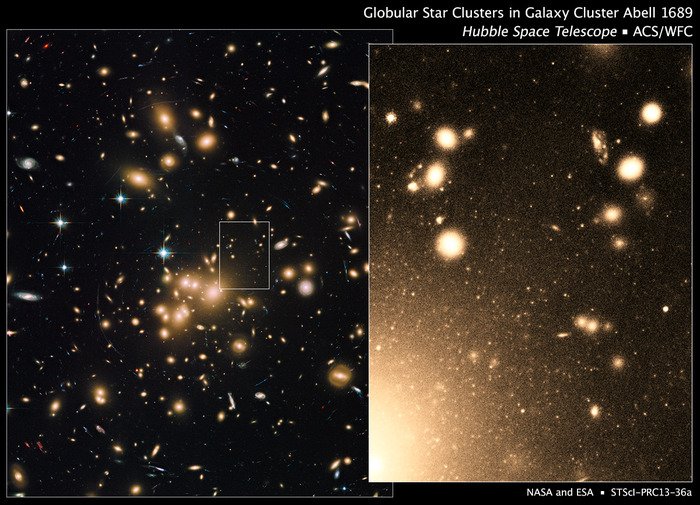The image at left, taken by Hubble's Advanced Camera for Surveys, shows the numerous galaxies that make up Abell 1689. The box near the center outlines one of the regions sampled by Hubble, containing a rich collection of globular clusters. The monochromatic view at right, taken at visible wavelengths, zooms into the region packed with globular clusters. Credit: NASA, ESA, J. Blakeslee and K. Alamo-Martinez, H. Ford
BALTIMORE, Sept. 12 (UPI) -- U.S. astronomers say the Hubble Space Telescope has observed the largest known population of globular star clusters in the core of a giant grouping of galaxies.
An estimated 160,000 globular clusters are swarming like bees inside the crowded core of the galaxy collection known as Abell 1689, the Space Telescope Science Institute in Baltimore reported Thursday.
In comparison, astronomers said, the Milky Way galaxy is host to about 150 such clusters.
Globular clusters can yield clues to understanding the early, intense star-forming episodes that marked galaxy formation, they said, and can also be used as reliable tracers of the amount of dark matter locked away in immense galaxy clusters.
Globular clusters contain some of the oldest surviving stars in the universe.
"The globular clusters are fossils of the earliest star formation in Abell 1689, and our work shows they were very efficient in forming in the denser regions of dark matter near the center of the galaxy cluster," John Blakeslee of the National Research Council said.
The population of clusters in Abell 1689 is roughly twice as large as any other population found in previous globular cluster surveys, the researchers said, and the most distant ever studied at 2.25 billion light-years away.















